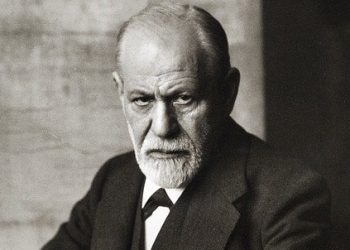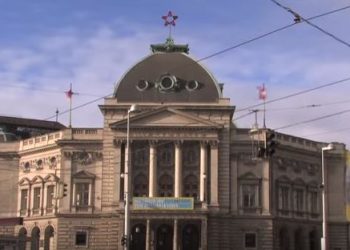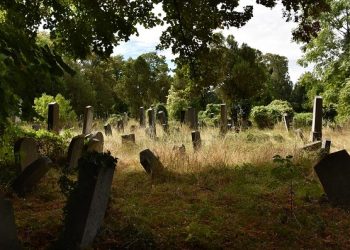Beneath this unassuming church in the center of Vienna lies an underground burial space spanning 10 crypt chambers, where members of the House of Habsburg were interred over approximately 400 years (from 1633 until the last burial in 2011). A total of 150 Habsburgs are buried here, including 12 Emperors and 18 Empresses. Their magnificent tombs have been preserved in an exceptional manner.
Today, you can visit the burial chambers and view 107 sarcophagi and 5 urns as part of the display. This location offers a rare glimpse, from a different angle, into the House of Habsburg, which ruled over large parts of Europe, and of course Austria, for about 1,000 years. The Capuchin friars of the church continue to serve as the guardians of the crypt chambers, as they have done for generations.
The Imperial Crypt is, without a doubt, one of the most popular attractions in Vienna. In this article, you can read about the crypt chambers and the ancient square beneath which they are located.
- The History of the Imperial Crypt
- The Tomb Display in the Imperial Crypt
- Essential Visitor Information for the Imperial Crypt
- Neuer Markt (New Market Square) and the Donner Fountain
The History of the Crypt Chambers
It was Anna of Tyrol who conceived the idea to establish a church and a burial place for herself and her husband, dedicating money to the project. The Capuchin Church was built between 1622 and 1632 according to the will of Empress Anna of Tyrol. In 1633, Empress Anna and her husband, Matthias, were interred there in simple sarcophagi in the chamber now known as the “Founders’ Crypt” (in German, Gründergruft).
In 1657, Emperor Leopold I expanded the burial chamber, and his son, Emperor Joseph I, continued the expansion of the complex. Maria Theresa also continued the expansion of the site, which grew beyond the church’s boundaries and reached the external garden that once belonged to the Capuchin monastery (which no longer exists). A type of transparent dome was built in the garden, allowing sunlight to penetrate the burial hall.
The old monastery, which had ceased operations, was demolished during the time of Emperor Ferdinand, and a new monastery was built as a replacement. As part of this project, two additional crypt chambers were built in the basement of the new structure: the Ferdinand Chamber and the Tuscan Chamber.
In 1908, Emperor Franz Joseph ordered a further expansion of the crypt complex, and the chamber named after Franz Joseph was also established.
Following this, another section was built called the New Chamber, which significantly increased the area of the site.
In 2003, the site was renovated again, and an air-conditioning system was installed with the aim of aiding in the preservation of the ancient sarcophagi.
The Tomb Display in the Imperial Crypt
150 members of the Habsburg family are interred across 10 crypt chambers. Some of the tombs have a simple appearance, while others are incredibly magnificent. One of the most impressive sarcophagi is the double tomb of Maria Theresa and her husband, Emperor Francis I.
Until the 18th century, the sarcophagi were made of a copper-like metal alloy that was coated with shellac colors. The impressive Baroque and Rococo sarcophagi, however, were constructed from genuine copper, making them more expensive (a symbol of the Habsburgs’ wealth).
For about a third of those buried in this room, their hearts were removed from their bodies and placed in special urns. Furthermore, the limbs of some of the deceased were separated from their bodies, and some were transferred to other locations, such as the catacombs beneath St. Stephen’s Cathedral.
Essential Visitor Information for the Habsburg Imperial Crypt
Opening Hours and Tours
- Open Daily: From 10:00 AM to 6:00 PM (Last admission is 5:30 PM).
- English Tours are available on Monday, Wednesday, and Saturday at 3:00 PM.
Admission Costs:
- Adult: 13 Euros
- Student (up to age 27) and Senior (over age 60): 11 Euros
- Children (up to age 18): 7 Euros
- Free Admission for Vienna Pass holders.
Address: Tegetthoffstraße 2, 1010 Wien
How to Get to the Crypt Chambers by Public Transportation
The crypt chambers are located in the Old Town, not far from the Jewish Museum, the Albertina Gallery, and the State Opera. It is easily accessible by public transport. You have a few options:
- Subway (U-Bahn):
- You can travel to the Karlsplatz station and walk about 7 minutes from there. Subway lines U1 (Red Line), U2 (Purple Line), and U4 (Green Line) stop at this station. Exit at the Oper (Opera) exit, and the walk is about 5 minutes.
- Another option is to take the U3 (Orange Line) and alight at the Stephansplatz station (St. Stephen’s Cathedral), then walk for about 12 minutes through the beautiful streets of the Old Town.
- Tram (Straßenbahn): Many trams run along the Ringstrasse. You can take lines 1, 2, 62, 71, and D and get off at the Kärntner Ring/Oper stop. The walk from there is about 7 minutes.
- Bus: Bus line 2A stops very close to the Albertina Museum. Alight at the Albertina stop, and the walk is about 2 minutes.
Neuer Markt (New Market Square) – One of Vienna’s Ancient Squares!
The square is located west of the major shopping and restaurant street, Kärntner Straße. In the Middle Ages, the Hoher Markt (Upper Market) near Schwedenplatz was the central trading square, but when it became insufficient for the city’s growing population, it was decided to establish a new market location. The new market was mainly used for trading flour and grains, and as such, it was also referred to as the “Flour Market” (in German, Mehlmarkt). During World War II, the buildings around the square were damaged by Allied bombings, and more modern structures were erected in their place.
At the heart of the square stands the Donner Fountain, built in 1739 by Georg Raphael Donner. The fountain’s real name is the Providentia Fountain, but it is also known as the Flour Market Fountain. The copper statues on the fountain are copies; the original statues are located in the art gallery at the Belvedere Palace.
After your visit to the crypt chambers and the square, you can continue into the Old Town and walk to the Jewish Museum or St. Stephen’s Cathedral, which are very close by. Alternatively, you can walk towards the Ringstrasse and pass by the Albertina Gallery, the Palace Gardens, and the Hofburg Palace. Another option is to walk down Kärntner Straße and continue to the Vienna State Opera and St. Charles’s Church (Karlskirche).


















